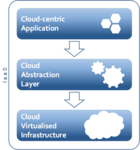5 minute read
Have you stopped to think about how the leading cloud computing providers are able to provide enormous quantities of computing resources at the click of a button? Clearly, they have massive data centres around the world filled with racks of high performance IT. If you were their only customer that might be the end of the story but, of course, they serve huge numbers of customers, many with enormously volatile workloads, and are taking on more every minute. Now and again you might get a little reminder that this does not all come about through magic (have you noticed the occasional “our servers are busy” message when trying to use Twitter?). So how does it all work and what risks does this pose to your business? How confident can you be that your next ad-hoc request for a virtual machine will be satisfied? Even worse, how do you know that your existing cloud based services will not be constrained by your cloud provider’s next wave of new customers?










